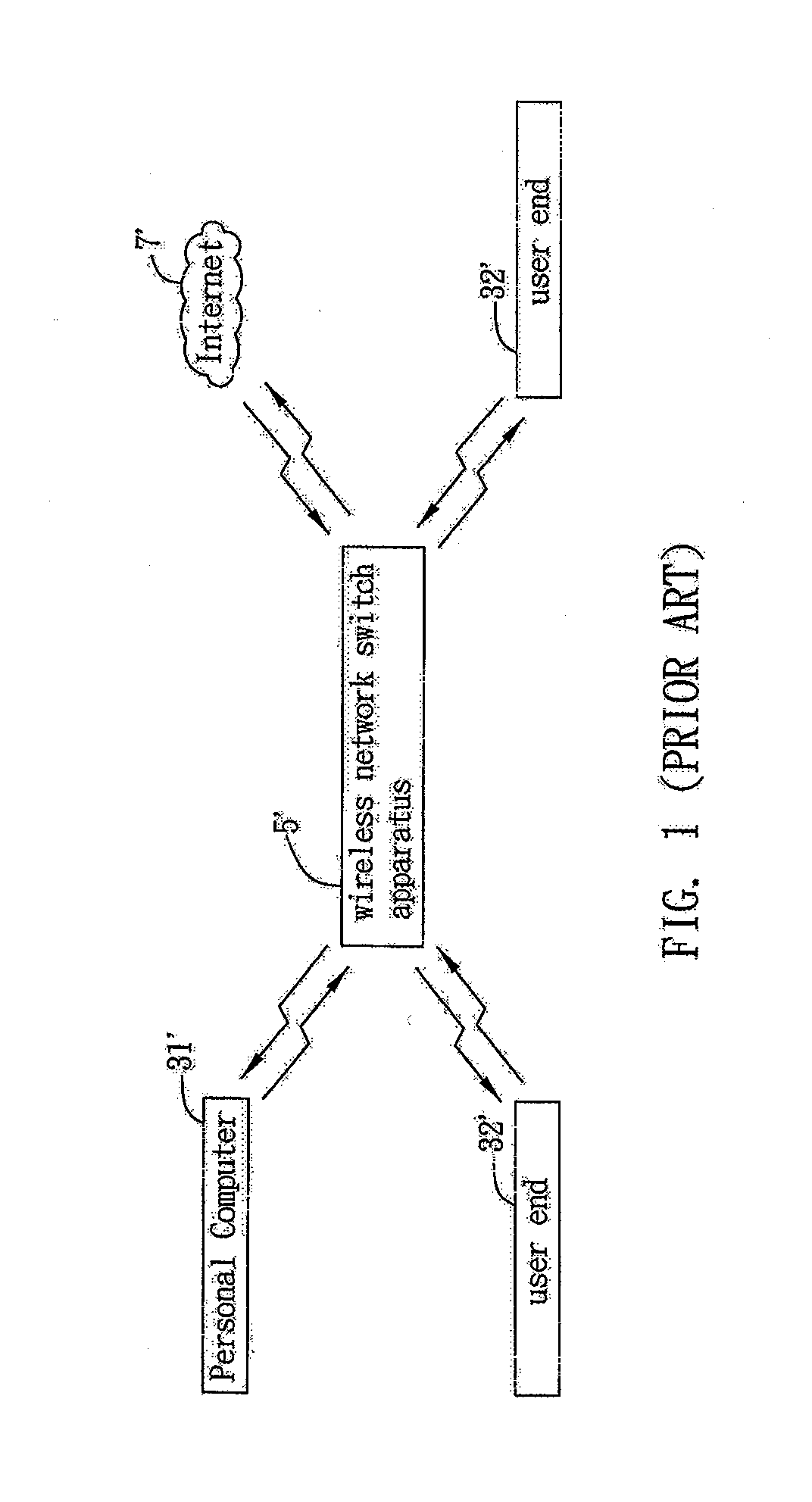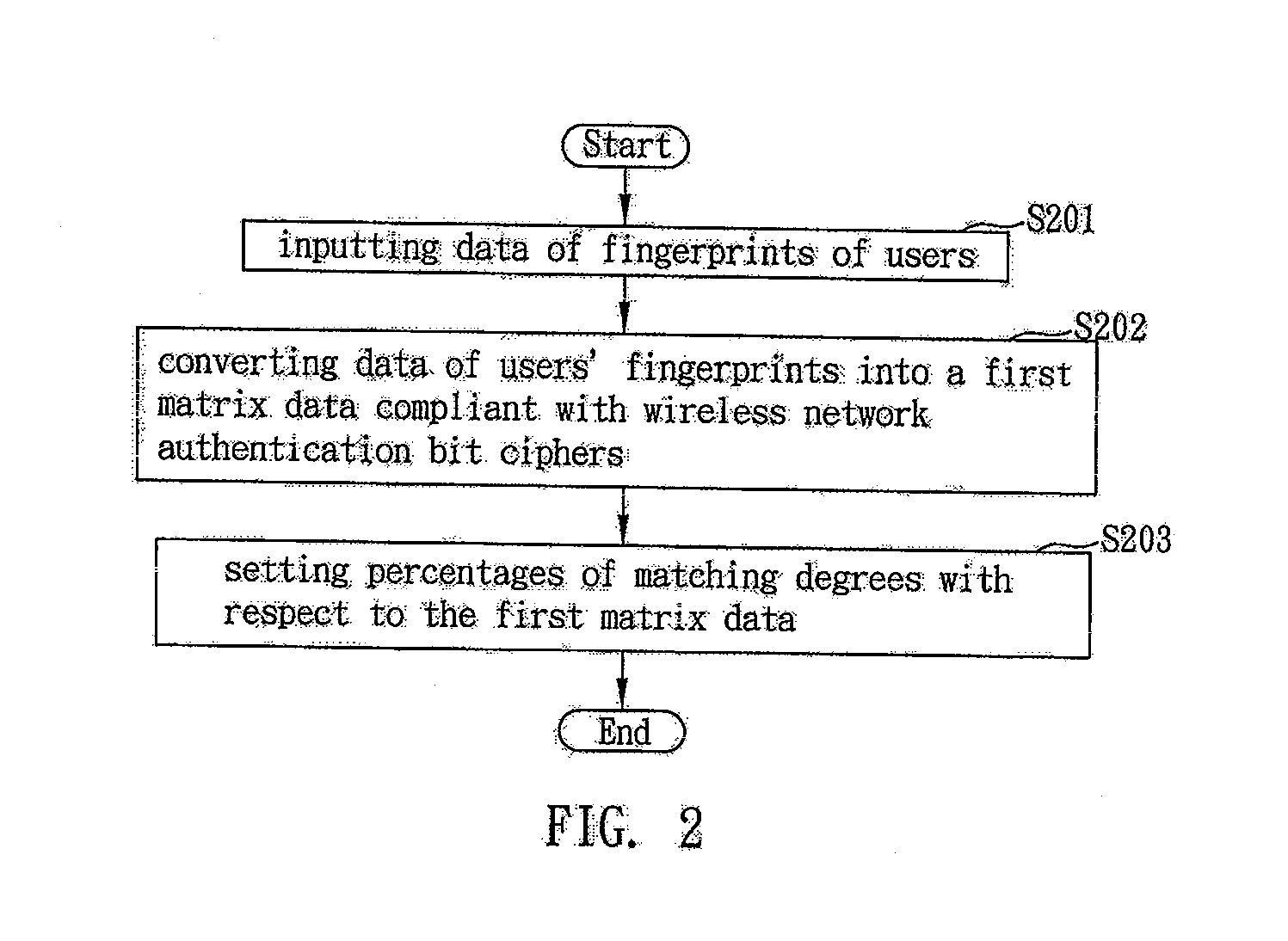Fingerprint authentication method for accessing wireless network systems
a wireless network and authentication method technology, applied in the field of user authorization authentication technique, can solve the problems of mechanical and inflexible methods for controlling wireless access rights, putting a large burden on wireless network access rights, and users often find other more robust methods too complicated to use or too difficult to implement in practical application, so as to improve the quality of wireless network connection, increase the usage rate of wireless network resources, and enhance the security and reliability of authentication mechanisms
- Summary
- Abstract
- Description
- Claims
- Application Information
AI Technical Summary
Benefits of technology
Problems solved by technology
Method used
Image
Examples
Embodiment Construction
[0019] The present invention is described in the following so that one skilled in the pertinent art can easily understand other advantages and effects of the present invention. The present invention may also be implemented and applied according to other embodiments, and the details may be modified based on different views and applications without departing from the spirit of the invention.
[0020]FIG. 2 is a flow chart of the steps involved in setting authentication data for the fingerprint authentication method for accessing a wireless network of the invention. This embodiment is to be viewed in conjunction with FIG. 4, in which the fingerprint authentication method for accessing the wireless network is applied to a wireless network system 7 that connects to a wireless network communications apparatus 5 and to a user end operating apparatus 3, wherein the user end operating apparatus may be a personal computer (PC), a notebook computer (NB), a personal digital assistant (PDA), a han...
PUM
 Login to View More
Login to View More Abstract
Description
Claims
Application Information
 Login to View More
Login to View More - R&D
- Intellectual Property
- Life Sciences
- Materials
- Tech Scout
- Unparalleled Data Quality
- Higher Quality Content
- 60% Fewer Hallucinations
Browse by: Latest US Patents, China's latest patents, Technical Efficacy Thesaurus, Application Domain, Technology Topic, Popular Technical Reports.
© 2025 PatSnap. All rights reserved.Legal|Privacy policy|Modern Slavery Act Transparency Statement|Sitemap|About US| Contact US: help@patsnap.com



